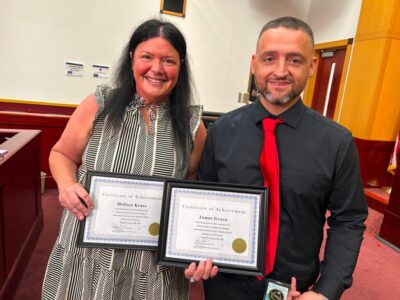Hoarding

By BECKY BROWN and DEB WILLIAMS
Most people know someone that saves everything or has too much stuff for their living space. They may have so much clutter that there is no place to sit down or there is only a path to get through their house. People don’t generally talk about this, they just pretend it doesn’t exist. This would be hoarding disorder but hoarding is more than just keeping everything or collecting things.
Hoarding disorder is a mental health condition in which a person feels a strong need to save a large number of items, whether they have monetary value or not, and experiences significant distress when attempting to get rid of the items. The hoarding impairs their daily life.
Typical hoarded items include newspapers, magazines, household goods and clothing. Sometimes, people with hoarding disorder accumulate a large number of animals, which are often not properly cared for.
Hoarding disorder can lead to dangerous clutter. The condition can interfere with your quality of life in many ways. It can cause people stress and shame in their social, family, and work lives. It can also create unhealthy and unsafe living conditions.
Hoarding items and collecting items are distinct behaviors.
Collecting normally involves saving certain types of items, such as comic books, currency or stamps. You’d carefully choose these items and typically organize them in a certain way. Collecting items in this way doesn’t negatively impact your daily life.
Hoarding doesn’t involve organization of the items in a way that makes them easy to access or use. People with hoarding disorder often hoard items that have little or no monetary value, such as pieces of paper or broken toys. The hoarding also negatively impacts their daily life.
Hoarding disorder often begins during adolescence and gradually worsens with age, causing significant issues by the mid-30’s.
Hoarding disorder is more likely to affect people over 60 years old and people with other mental health conditions, especially anxiety and depression. Approximately 2% to 6% of people in the United States have hoarding disorder.
Some people with hoarding disorder recognize that their hoarding-related beliefs and behaviors are problematic, but many don’t. In many cases, stressful or traumatic events, such as divorce or the death of a loved one, are associated with the onset of hoarding symptoms.
People with hoarding disorder feel a strong need to save their possessions. Other symptoms include: -Inability to get rid of possessions, -Experiencing extreme stress when attempting to throw out items, -Anxiety about needing items in the future, -Uncertainty about where to put things, -Distrust of other people touching possessions, -Living in unusable spaces due to clutter, -Withdrawing from friends and family.
People with hoarding disorder may hoard items for any of the following reasons:
-They believe that an item will be useful or valuable in the future, -They feel an item has sentimental value, is unique and/or irreplaceable, -They think an item is too great of a bargain to throw away, -They think an item will help them remember an important person or event, -They can’t decide where an item belongs, so they keep it instead of throwing it away.
Many people with hoarding disorder also have associated issues with cognitive functioning, including: -Indecisiveness, -Perfectionism, -Procrastination, -Disorganization, -Distractibility.
People with hoarding disorder rarely seek help on their own. Concerned friends or family members often reach out to a professional to help a loved one with the condition. Contact a healthcare provider or mental health professional if hoarding makes a living situation unhealthy or unsafe for you or someone you know. Hoarding disorder can be treated with cognitive behavioral therapy and antidepressants.
There’s no known way to prevent hoarding disorder. However, hoarding behaviors appear relatively early in life (usually between the ages of 15 and 19 years) and then follow a chronic course. If you notice signs of hoarding in your child or someone you know, early recognition, diagnosis and treatment are essential to improving outcomes.
Hoarding is not about being a lazy housekeeper and it won’t get cured overnight but there is treatment available if you just reach out and talk about the behaviors instead of hiding behind piles of stuff.
If you are in the process of decluttering and need an accountability partner, reach out to Becky or Deb at Together We Can and we would be more than happy to help you. Our number is 515-391-3233. You can also stop by our office at 8 West Church Street.
——
Becky Brown and Deb Williams are the cofounders of Together We Can, a mental health nonprofit based in Marshalltown.




